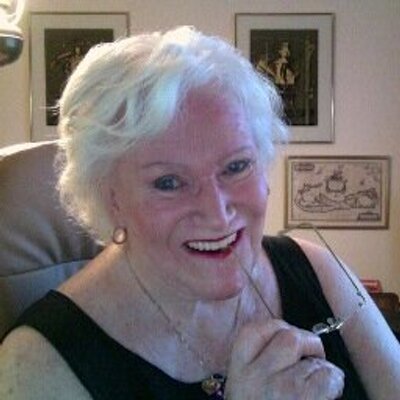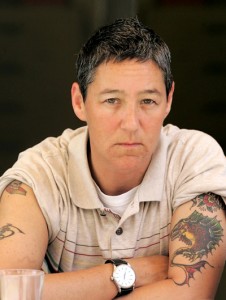George Douglas (1761-1827), the sixteenth Earl of Morton, Representative Peer of Scotland, Baron Douglas of Lochleven, chamberlain of the household to the queen consort, Knight of the Order of the Thistle, lord lieutenant of Fifeshire and of Midlothian, vice-president of the Royal Society, Lord High Commissioner of the Church of Scotland, had a youthful dalliance with a woman whose name is lost. This resulted in two 'reputed', this is illegitimate, daughters: Mary Diana Dods and Georgiana Dods.
They were raised in London and given an excellent classical education.

By 1810 Georgiana had married a Captain John Carter of the
Bombay Native Infantry and went to live with him in Bombay. They had two children, but they both died in 1815. They then had two more children, but Captain Carter died in late 1818.
Mary had a physical deformity and was considered to be plain.
In 1814, their father married a woman almost the same age as his daughters, and established allowances of £100pa each for Mary and Georgiana. To supplement this, Mary gave lessons, ran a school for girls and took in lodgers. She also wrote anonymously and under the nom de plume of David Lyndsay a variety of short stories, essays and poems which were published in
Blackwood’s Edinburgh Magazine and elsewhere between 1821 and 1828. Collections of fiction were also published as books:
Dramas of the Ancient World, 1822 and
Tales of the Wild and the Wonderful, 1825.
Another writer,
Eliza Rennie, described a meeting with Miss Dods:
"certainly Nature, in any of its wildest vagaries, never fashioned anything more grotesque-looking than this Miss Dods. She was a woman apparently between thirty and forty years of age, with a cropped curly head of short, thick hair, more resembling that of a man than of a woman. She wore no cap, and you almost fancied, on first looking at her, that some one of the masculine gender had indulged in the freak of feminine habiliments, and that "Miss Dods" was an alias for Mr. —. She had . . . a complexion extremely pale and unhealthy, with that worn and suffering look in her face which so often and so truly—as it did, poor thing, in hers—tells of habitual pain and confirmed ill-health; her figure was short, and, instead of being in proportion, was entirely out of all proportion—the existence of some organic disease aiding this materially." (quoted in Friedman:11).
Mary started to dress as male and took the name Walter Sholto Douglas around the time that her father, George Douglas, died. Walter agreed to a marriage of convenience with Isabelle Robinson.
Isabelle (born 1810), was a friend of
Mary Shelley, the authoress of
Frankenstein; Or The Modern Prometheus. Her father was one of the builders putting up what came to be known
Regency architecture. His family mixed in artistic and literary circles. One son became a banker; a second found his fortune in Australia; one daughter married an officer in the East India Company; another married a rich widower. At 17
Isabelle was pregnant and unwed, the father, William Graham, having returned hastily to the US to avoid arrest. There, he died in a duel. Walter and Isabelle named the child Adeline Douglas, and presented Isabelle as Mrs Douglas.
In 1827 Mary Shelley helped to arrange an impersonation that resulted in passports for Mr and Mrs Douglas, not so much so that they could travel to France, which did not then require passports for British travellers, but to establish an identity for Walter who hoped to join the diplomatic service of some other country (which was then a common practice).
They entered Anglo-French society in Paris where they were invited to the salon of
Mary Clarke and came to know many prominent writers and politicians:
Claude Fauriel, Stendhal,
Prosper Mérimée,
Victor Hugo. However Walter was disappointed in his desire to find a diplomatic post. Isabelle became known as a flirt, and had affairs with other men.
In 1829 Mr Douglas was in debtors' prison. He declined both physically and mentally, and he died a year later.
The widow Douglas married the Rev. William Falconer in 1839. She died in Italy in 1869.
Adeline Douglas, described, with a little exaggeration, as the "daughter of Walter Sholto Douglas, an officer in HM's Service”, married Henry Drummond Wolff in 1853, and lived until 1916.
Perhaps influenced by her encounter with the Douglases Shelley included disguise plots in her later fiction:
Perkin Warbeck, "Ferdinado Eboli", "The False Rhyme", "Transformation".
This story of Walter Douglas remained unknown until Betty Bennett, a Shelley scholar at the American University in Washington DC who was working on an annotated edition of the letters of Mary Shelley became frustrated in not being able to identify Lyndsay and Douglas and then spent 18 years tracking them down in archives, cemeteries etc. and finally realising that Lyndsay, Douglas and Dods were all one person.
- David Lindsay and William Blackwood. Dramas of the Ancient World. Edinburgh: Printed for William Blackwood, 1822.
- David Lindsay. Tales of the Wild and the Wonderful. London: Hurst, Robinson & Co. Edinburgh: A. Constable & Co. 1825.
- Betty T. Bennett. Mary Diana Dods: A Gentleman and a Scholar. Morrow 1991. Johns Hopkins University Press 305 pp 1994.
- Jonathan Kirsch. "BOOK REVIEW : Literary Sleuth Solves 19th-Century Mystery: MARY DIANA DODS, A Gentleman and a Scholar". Los Angeles Times, August 07, 1991. http://articles.latimes.com/1991-08-07/news/vw-23_1_mary-diana-dods.
- Vern L. Bullough & Bonnie Bullough. Cross Dressing, Sex, and Gender. Philadelphia: University of Pennsylvania Press, 1993: 165-6.
- Miranda Seymour. Mary Shelly. Grove Press, 2001: 370-395.
- Geraldine Friedman. “Pseudonymity, Passing, and Queer Biography: The Case of Mary Diana Dods”. érudite: Promouvoir et diffuser la recherché. 23, August 2001. www.erudit.org/revue/ron/2001/v/n23/005985ar.html.
- Martha Vicinus. Intimate Friends: Women Who Loved Women, 1778-1928. University of Chicago Press, 2004: 24-5.
- "Dods, Mary Diana (David Lyndsay, Walter Sholto Douglas)". In Elizabeth Ewan,, Sue Innes, and Sian Reynolds. The Biographical Dictionary of Scottish Women From the Earliest Times to 2004. Edinburgh: Edinburgh University Press, 2006.
EN.WIKIPEDIA
____________________________________________________________
The discovery of this story by Betty Bennett is a monumental work of scholarship. The one small gripe is her lack of acquaintance with transgender biography. She is a thorough scholar and read several of the available works on transvestity and transsexuality that were available in the early 1990s, although she does not mention any autobiography by a trans man, and apparently did not attempt to speak to one - although admittedly the few years up to 1991 (when her book was published) were not the best:
Louis Sullivan was sick with AIDS,
Mario Martino had disappeared,
Bet Power had not yet got organized. The timing is unfortunate: a decade later and a lot of good books by trans men would be available. As it was, Bennet came to the conclusion not that Douglas was a man or a proto-transsexual, but that becoming a man was a way for an unmarriageable woman to acquire a sort of legitimacy. Despite this, many of us would propose that the name in the book's title should be Walter Sholto Douglas not Mary Diana Dods. In fact "Dods" is a more false name in that it denies that the person is descended from the Douglas dynasty. In the later part of the book, once it is revealed that Douglas and Dods are the same person, Bennett puts quotation marks around "he" and "his" whenever referring to Douglas. Inevitably,
The Biographical Dictionary of Scottish Women follows suit in its name for the person, but so does Wikipedia, and Vern Bullough.
Sholto was a traditional name in the Douglas Clan dating back to 767.
Another branch of the Douglas clan were the
Marquesses of Queensberry. The 9
th Marquess (1844 – 1900) was
John Sholto Douglas, famed for the Queensberry rules followed in boxing, and for his litigation against Oscar Wilde. His eldest son
Francis was said to have been a lover of
Archibald Primrose, 5
th Earl of Rosebery, Prime Minister 1894-5. Francis died in a shooting accident, that was maybe suicide. His third son,
Alfred, known as Bosie, was a lover of Oscar Wilde.
Bennett renders George Douglas (1761-1827) Lord Morton as the 15
th earl.
Wikipedia makes him the 16
th. An experiment by the earl in
breeding horses was cited by Charles Darwin. Incidentally Wikipedia attributes only one daughter to him, and ignores both Mary and Georgiana.
£100pa, which was not enough for Douglas to live on, was over 4 times the average wage in the 1820s.
One wonders how it is that the administrators of the debtors' prison did not examine the body of one who had died there.


















